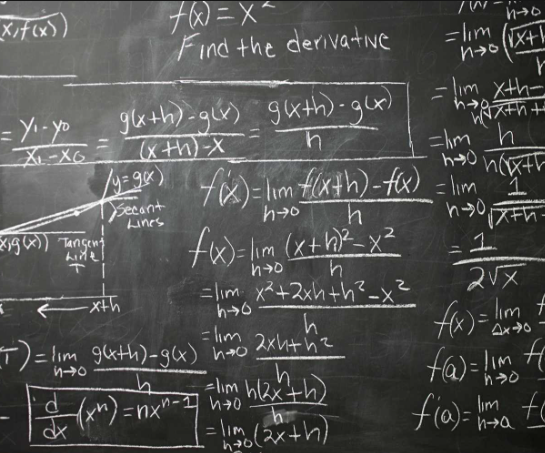
When do I use the chain rule and when do I use the product rule?
Calculus can be a challenging subject for many Maths students, with concepts like differentiation often seeming overwhelming. Among the key techniques in this area are the chain and product rules, which sometimes cause confusion over their appropriate application.
However, understanding how these two differ and when to use each is crucial for successfully solving differentiation problems. In this blog post, we'll delve into these two methods, offering clarity and examples to help students discern when to apply each one effectively as part of their study and revision.
What Is The Difference Between The Two?
The chain and the product concepts are two fundamental differentiation concepts that students will encounter throughout their calculus studies.
The Product Rule:
-
When to Use: The product rule is applied when you are differentiating a function that is the product of two other functions. This is typically represented as h(x) = f(x) * g(x).
-
How It Works: To differentiate using the product rule:
- Take the derivative of the first function (f'(x)).
- Take the derivative of the second function (g'(x)).
- Apply the formula: h'(x) = f'(x)g(x) + f(x)g'(x).
-
Example: For h(x) = (2x + 3) * (5x - 1), differentiate (2x + 3) and (5x - 1) separately and then apply the product rule.
The Chain Rule:
-
When to Use: The chain rule is used when you have a function within another function, often referred to as a composite function, such as h(x) = f(g(x)).
-
How It Works: To differentiate using the chain rule:
- Find the derivative of the outer function (f'(g(x))).
- Multiply it by the derivative of the inner function (g'(x)).
- Apply the formula: h'(x) = f'(g(x))g'(x).
-
Example: If h(x) = cos(3x^2), the outer function is cos(u) and the inner function is 3x^2. Differentiate each and apply the chain rule.
For example, let's consider h(x) = (2x + 3) * (5x - 1).
How To Differentiate The Two Concepts?
To differentiate this function using the product rule, we first take the derivatives of each function: f(x) = 2x + 3 and g(x) = 5x - 1. The derivatives of these functions are f'(x) = 2 and g'(x) = 5. We can then use the formula as follows: h'(x) = f(x)g'(x) + f'(x)g(x) = (2x + 3) * 5 + 2 * (5x - 1).
The chain rule is particularly useful in differentiation when dealing with nested functions. Consider, for example, y = sin(2x^2 + 3x + 1). To differentiate this expression using the chain method, we first identify the outer layer (y = sin(u)), where u represents 2x^2 + 3x + 1. The derivative of this outer layer is dy/du = cos(u). Then, we find the derivative of the inner layer, represented as u, which is du/dx = 4x + 3. The final step is to multiply these derivatives to find the full derivative of y concerning x: dy/dx = dy/du * du/dx = cos(u) * (4x + 3).
When tackling a new differentiation problem, it's important to remember that both methods might be applicable, depending on the complexity of the given expression. Students should initially examine the problem for any nested expressions or instances where expressions are multiplied together. Once these elements are identified, the appropriate methods can be determined based on the specifics of the expressions involved.
Conclusion
By practising these concepts and reviewing examples, students can free themselves from the confusion and dilemmas often associated with differentiation. This helps students improve their understanding and proficiency in calculus. The study of these concepts is essential for any calculus student, and luckily, there are plenty of free resources available online that help students in their journey of further study and revision. These resources are designed to help students grasp complex topics more easily, making their study sessions more effective and enriching.